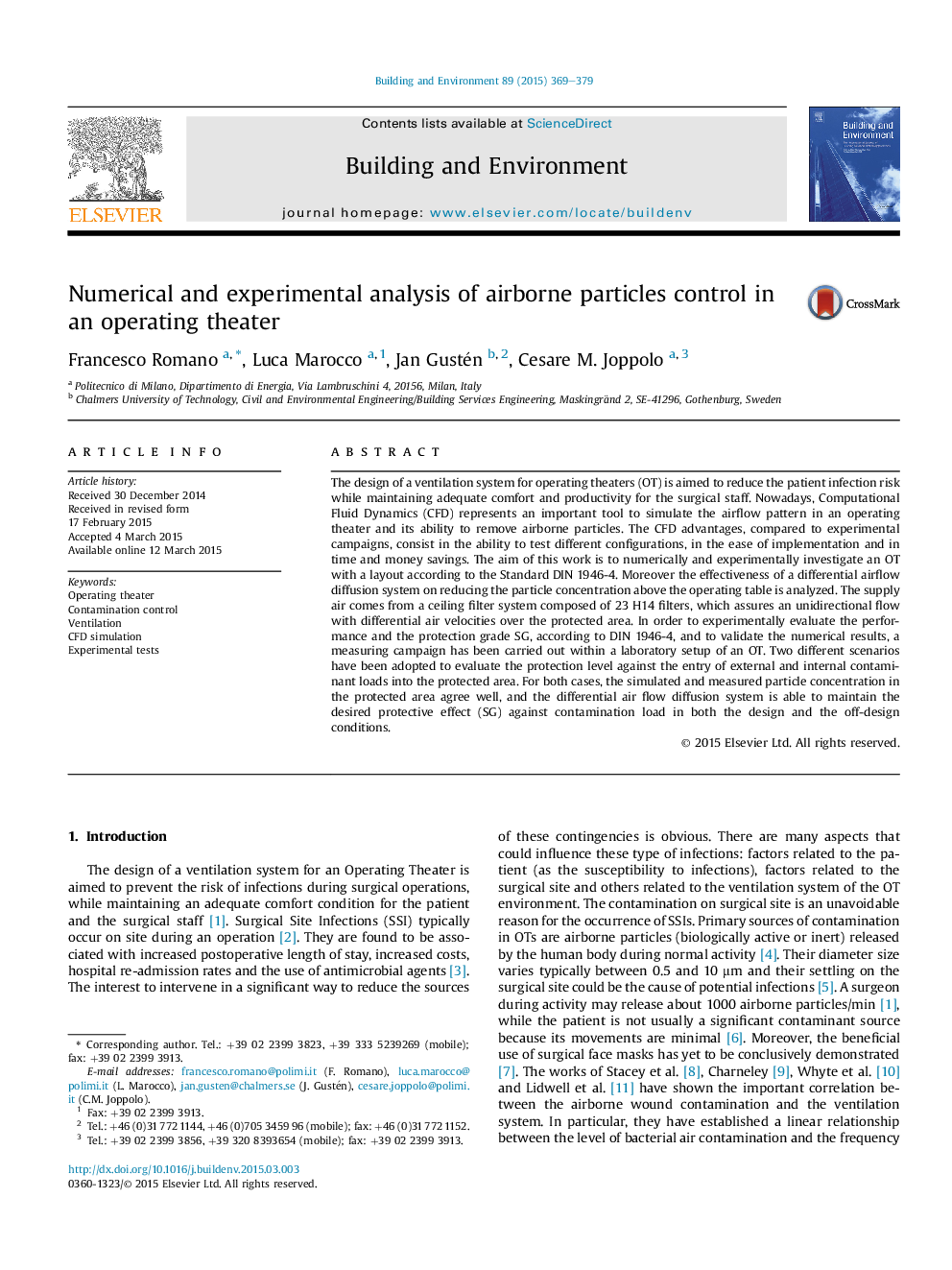| Article ID | Journal | Published Year | Pages | File Type |
|---|---|---|---|---|
| 6699988 | Building and Environment | 2015 | 11 Pages |
Abstract
The design of a ventilation system for operating theaters (OT) is aimed to reduce the patient infection risk while maintaining adequate comfort and productivity for the surgical staff. Nowadays, Computational Fluid Dynamics (CFD) represents an important tool to simulate the airflow pattern in an operating theater and its ability to remove airborne particles. The CFD advantages, compared to experimental campaigns, consist in the ability to test different configurations, in the ease of implementation and in time and money savings. The aim of this work is to numerically and experimentally investigate an OT with a layout according to the Standard DIN 1946-4. Moreover the effectiveness of a differential airflow diffusion system on reducing the particle concentration above the operating table is analyzed. The supply air comes from a ceiling filter system composed of 23 H14 filters, which assures an unidirectional flow with differential air velocities over the protected area. In order to experimentally evaluate the performance and the protection grade SG, according to DIN 1946-4, and to validate the numerical results, a measuring campaign has been carried out within a laboratory setup of an OT. Two different scenarios have been adopted to evaluate the protection level against the entry of external and internal contaminant loads into the protected area. For both cases, the simulated and measured particle concentration in the protected area agree well, and the differential air flow diffusion system is able to maintain the desired protective effect (SG) against contamination load in both the design and the off-design conditions.
Related Topics
Physical Sciences and Engineering
Energy
Renewable Energy, Sustainability and the Environment
Authors
Francesco Romano, Luca Marocco, Jan Gustén, Cesare M. Joppolo,
